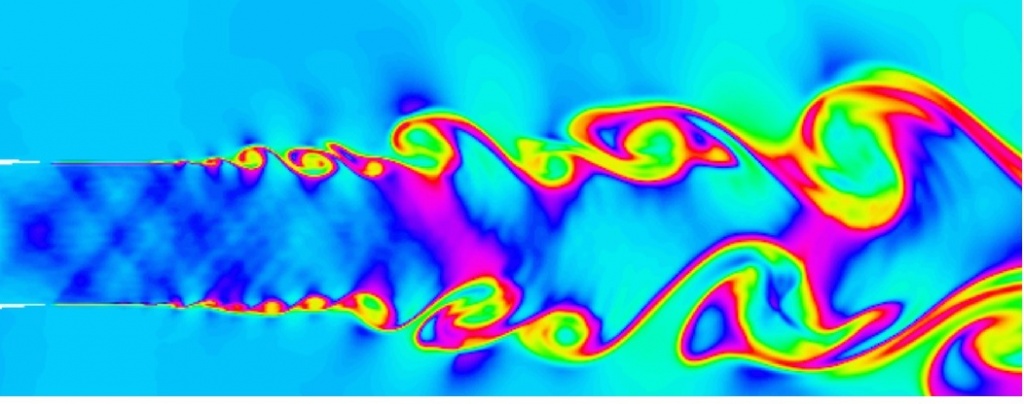Gas Dynamics and Combustion

Gas dynamics are of paramount importance for the aircraft engine design. The motion of the working fluid, i.e. gas in the air-breathing engine, is one of the key processes determining the conceptual design and parameters of a power plant.
Solutions to problems of optimizing the shape of engine components interacting with the gas fluid provide an indication of the limiting parameters that can be attained after practical problems of design and development of power plant units and components are solved.
Due to the outstanding complexity of the studied phenomena, gas dynamics exist at the intersection of fundamental and engineering sciences. The implementation of this link, when theoretical and experimental studies of sometimes difficult to formalize processes enable solutions to engineering problems, is one of the principal goals of CIAM's experts in gas dynamics. Achieving this goal requires synergy between the highest level of theoretical education and designer's intuition, as well as the ability to use both most complex mathematical tools and the latest experimental methods.
In CIAM, these efforts were initiated in 1952 by remarkable researcher, mathematician, and academician L. Sedov, an expert in continuum mechanics.
Two research schools were established in CIAM, which acquired wide recognition both in Russia and abroad. Academician G. Cherny, one of the inventors of the present-day theoretical gas dynamics, developed such areas as high-speed gas dynamics, optimal shaping problems, interaction between shock waves and the boundary layer, and physical gas dynamics. Professor, G. Abramovich, Doctor of Engineering Science, established a research discipline aimed at studying mixing and combustion processes, turbulence, heat and mass transfer, and turbulent stream flows.
Work Areas
Efforts in the areas of theoretical and applied gas dynamics are carried out in several CIAM departments and are generally related to specific technical objects and their elements. Such efforts include the development of mathematical models of gas dynamic processes, numerical methods of their solution, and experimental verification of theoretical studies. The main areas of long-term Institute activities relating to gas dynamics are:
-
Air intake studies, including those using full-scale power plant models;
-
Studies of subsonic, supersonic, and mixed flows in impeller machines, development of optimal configurations of compressor and turbine blades;
-
Studies of fully variable nozzles of gas turbine engines (including swiveling nozzles);
-
Nacelle studies, including those using full-scale power plant models;
-
Studies of jet noise and the use of noise suppression means (lobe attachments, chevron nozzles, etc.);
-
Studies of turbofan engine fan noise, noise of compressor and turbine components, methods of reducing compressor group noise; and sound-absorbing liner studies;
-
Subsonic flows in turbofan engine transition channels;
-
Gas dynamics, combustion, and heat transfer in combustion chambers;
-
Heat transfer on turbine blades, determining heat transfer coefficients in cooling channels;
-
Excitation of ultrasonic oscillations in channels with gas flow for heat transfer intensification;
-
Seeking solutions to aircraft electrization problems;
-
Magnetogasdynamics methods of control of internal and external super- and hypersonic flows;
-
Variable flows and flows with detonation waves;
-
Turbulent flows and turbulent combustion;
-
Development of methods for mathematical modeling of unsteady and transition gas dynamic processes in air-breathing engine components.
Today, the Institute's researchers have high-level mathematical models developed by them for solving research and applied problems in these areas. Based on the computing methods and software developed, computer technologies have been implemented, enabling computer simulation in these research areas, along with theoretical studies.
 Eng
Eng Rus
Rus